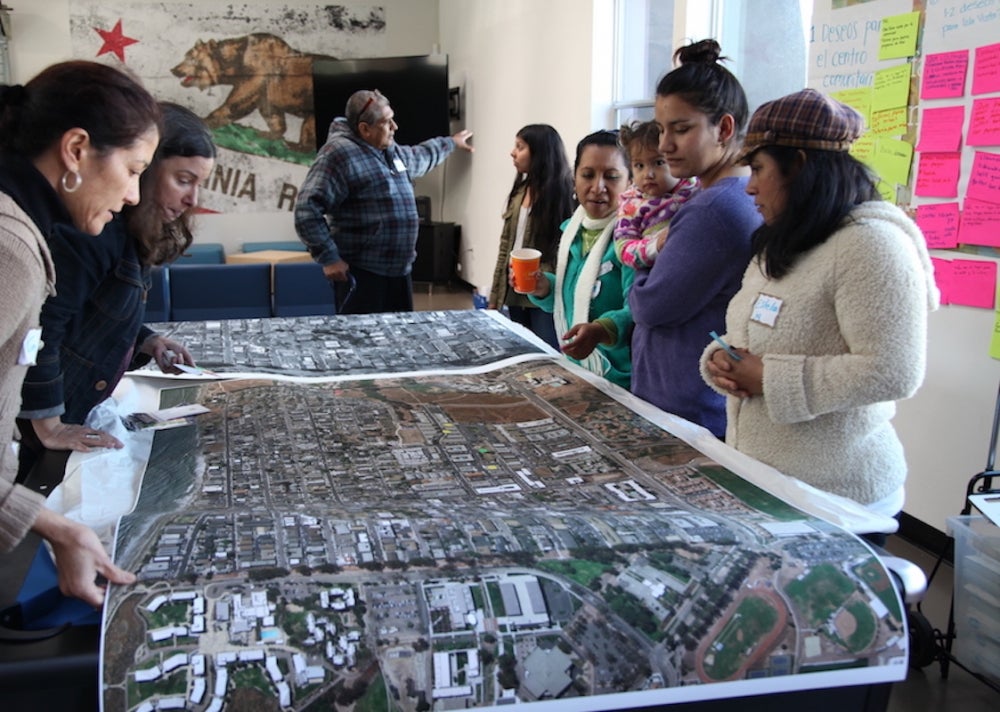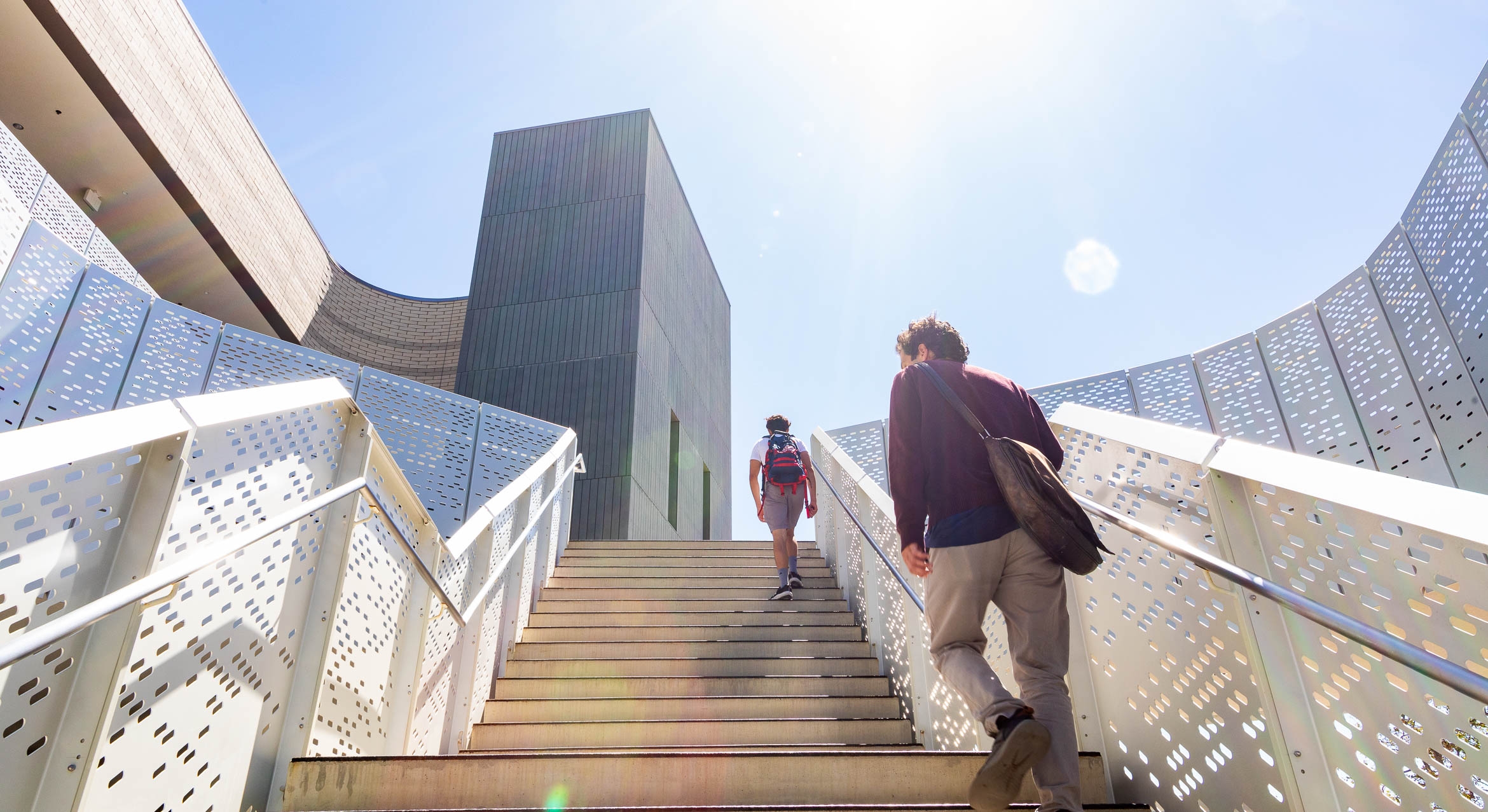
A Team Effort
To foster joint research, among its 10 campuses the University of California established the Multicampus Research Programs and Initiatives (UC MRPI). The program awards competitive grants to multicampus projects that seek to develop tangible solutions to problems facing our state and world. Each winning initiative is a partnership of at least three UC campuses.
The UC Office of the President (UCOP) has announced 16 UC MRPI recipients for 2019 — initiatives spanning topics in the sciences, social sciences and humanities that, altogether, will receive just over $9 million in grant funds. Six of those projects, which were selected from among 179 applications, involve researchers and scholars at UC Santa Barbara, including two led by Santa Barbara faculty.
Place-based arts
Kim Yasuda, an artist and professor of public practice in the Department of Art, will lead a team that brings together art, design and media practitioners and projects that engage in place-making as an emerging form of scholarship that highlights the potential “to demonstrate direct impact of UC research within the diverse environs of California.” According to Yasuda, over the past decade, creative place-making has evolved as a community-based approach to land use that brings together arts and cultural development with fields of civic and environmental planning and design.
This multifaceted strategy can take many forms, such as a public artwork, a housing development, media platform, water remediation project or part design, among others. A key part of the concept, Yasuda continued, is the central roles that both artists and citizens play in the activation of a place.
Yasuda will work together with other lead artists and scholars from across five UC campuses (Berkeley, Davis, Merced and Santa Cruz, in addition to Santa Barbara) for the planning initiative “Art + CA: UC Place-Based Arts + Design.” The initiative aims to align research across the UC system over the course of a two-year planning/pilot phase. “Our primary goals are to develop more publicly-accessible and distributive research platforms that allow our artists to engage with each other, as well as with a broader set of disciplinary partners and community stakeholders,” Yasuda said. “In so doing, we link distinctive arts programs and practices as a collective network that engages with and has direct impact in communities across our state.
In the first of a two-year plan, Yasuda will work with faculty colleagues and students to create an inventory of research practices, programs and centers that exist across the UC system. In the second year, they plan to pilot a series of arts initiatives and infrastructures that could be scaled systemwide for future multicampus arts program development.
“As we have learned, we need to find ways to make these organizing efforts both visible and sustainable,” said Yasuda. “We hope that this planning initiative will help us to identify collective goals and economies of scale through a variety of platforms. Through the mapping of our work, we create the ‘connective tissue’ necessary to amplify our UC artists and the valuable role that they play in UC research and public life.”
Yasuda pointed out compelling date regarding the significant presence of artists in the UC system: “According to UCOP Office of Research, there are currently 650 UC Academic Senate faculty, a greater number of adjunct faculty and 1,500 graduate students engaged in the fields of arts, design and media,” she said. “This represents more than 20 percent of the UC research enterprise. This initiative will be only one among UC-sponsored research within our systemwide portfolio and we intend to maximize our presence.”
Magnetic resonance spectroscopy
Across campus from Yasuda, physics professor Mark Sherwin will lead a cohort enhancing the sensitivity of magnetic resonance spectroscopy, in what has been coined The California Magnetic Resonance eXploration Initiative. The project promises to revolutionize scientist’s ability to examine the structure and composition of a diverse array of materials.
Most people are familiar with MRI, or magnetic resonance imaging, a technique that has found many applications in medicine. The technologies make use of a property of particles called spin. Combined with a particle’s electric charge, their spin generates a tiny magnetic field. Scientists can make the particles wobble, or precess, like a spinning top by introducing a strong, external magnetic field. In this way, they can learn about a material’s structure, because each particle precesses at a specific frequency for a given magnetic field strength.
Currently, most of these techniques focus on atomic nuclei, because they oscillate more slowly than electrons, at a rate more amenable to the instruments. Although nuclear magnetic resonance is tremendously useful, it has certain drawbacks. At low frequencies it’s harder to distinguish between different signals, and the signals are relatively faint.
Higher frequencies would offer scientists more precision, sharper data, and stronger signals. What’s more, many atoms respond weakly to nuclear magnetic resonance. For instance, the only variety, or isotope, of oxygen that responds to this technique accounts for just 0.04 percent of natural oxygen.
Because every particle has a fixed ratio between its precession frequency and the magnetic field, increasing the magnetic field will drive up the particle’s resonant frequency and, along with it, the technique’s precision. Fortunately, Sherwin and his colleagues have developed a technique for measuring and manipulating particles at higher frequencies, which will enable them to investigate a broader range of materials with unparalleled precision using, for the first time, both electrons and nuclei at high magnetic fields.
“Using electron magnetic resonance together with nuclear magnetic resonance we could see the oxygens, and we could see lots of other species of nuclei, like sulfur and calcium,” Sherwin said. “There are all kinds of very important nuclei that are just not accessible right now.”
With their UC MRPI grant, Sherwin and his colleagues will fund roughly six student-submitted projects, inviting these student researchers at other UC campuses to take advantage of the UC Santa Barbara’s facilities attuned to high frequency spectroscopy. “We’ve been building equipment for a long time and we want to start generating the research community that will heavily use this facility,” said Sherwin.
Sherwin sees these projects as the first step in a plan to revolutionize the discipline of magnetic resonance spectroscopy. Last year, his colleagues at the National High Magnetic Field Laboratory made a breakthrough in superconducting magnetic technology. The new magnets have blasted through the highest field previously reachable. Ultimately, Sherwin plans to unite this powerful technology with his group’s progress in manipulating terahertz frequency pulses, creating the premier high-field magnetic resonance lab at UC Santa Barbara.
The collaborations and projects generated by the UC MRPI grant are a critical part of an effort led by Sherwin and long-time collaborator Songi Han, a professor of chemistry and biochemistry. Together they’ve worked with Brad Chmelka, a professor of chemical engineering, Raphaële Clément, an assistant professor of materials, and other researchers in magnetic resonance at UC Santa Barbara and elsewhere to convince the National Science Foundation that this enterprise is worth the funding it will need in order to bring it to the next level.



